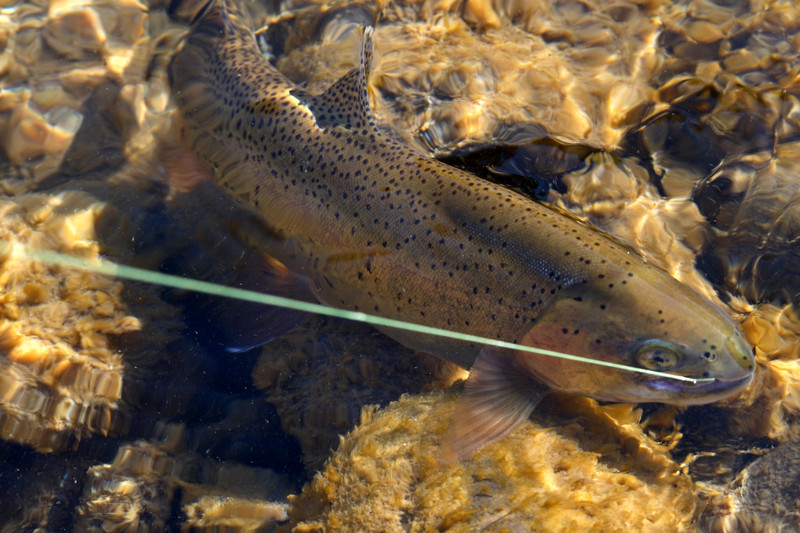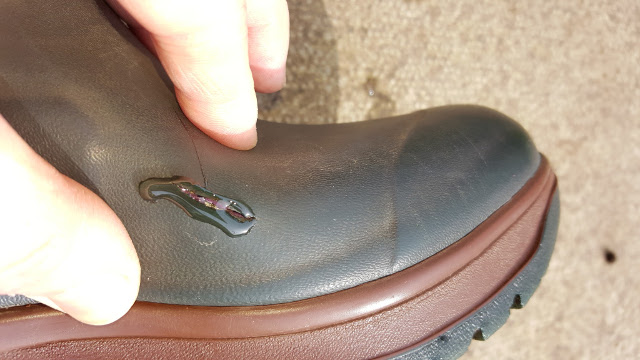| Disclosure: Just to be open and honest the buttons and links you click on in the website will in most cases take you to another website where you can purchase the products I am reviewing. As an Amazon Associate I earn from qualifying purchases. |
River Fly Fishing Tips for Beginners – Learn to Catch

River fly fishing is completely different from lake, lough or other Stillwater fly fishing. The main difference is the fact that in river fishing you have to deal with the flow of the river as Stillwater as its name dictates is pretty motionless. There is the possibility of underwater currents and wind can make things interesting but for the most part, lakes are motionless.
Rivers on the other hand have many features which make them more interesting (to me anyway) with the speed and flow of the river being the main one. To fish rivers properly takes a bit of working out. You need to look at the river flow what speed, direction and depths of the pools etc. All these factors will affect where the fish tend to lie. Water depth will also affect the prospective lies for fish entering a system like Salmon, Sea Trout and Steelhead entering from the Sea again. When conditions are dry and the water is low the fishing will be completely different from when the river is in spate and fish are moving through the system.
Quick Post Navigation
What direction to cast on the river.
In general when fishing a river we cast with the flow of the water so the flow can take our flies downstream in a drift to cover lying fish and trout. This is normally done at a 45 deg angle across the pool with many fly fishing cast types. The flies are allowed to drift downstream in the direction of the flow and overlying fish to hopefully induce a take. We can retrieve these flies in various ways to help attract the fish’s attention and hopefully a take. These retrieves bring the flies back towards the angler ready for the next cast.
On other occasions fly fishing against the flow is recommended particularly if fishing for grayling or trout in a chalk stream. As the water is so clear it means you are approaching them from behind so they can not see you. This takes a bit of control to keep in touch with your flies as you need to retrieve the fly line at the same speed of the flow so there is no slack but not too fast as to affect the drift of the fly.
Against the flow?
As we are casting over the trout in this case we need to present the fly with delicate casting and use clear leader material and fly line head sections to not spook the trout. With a bit of practice, the proper presentation can be accomplished and fun days stalking trout or grayling by sight.
Nymph fishing in a river requires the correct depth to be worked out so you can bounce the nymph along the bottom or close to it. Nymphing while presenting your fly 2 or 3 feet off the bottom will not be as effective so it’s important to work out the depth beforehand. This can be done with a weighted fly and a floating sight indicator which can be moved up and down the line to work out the correct depths. As no pool is the same depth from head to tail you need to compromise the best depth to use for the pool. Alternatively, if you build a movable depth controller you can adjust as you move down the pool. This takes a bit of practice and knowledge.
While fishing a normal river in the normal flow direction there are a few tips that can make for a better session. Firstly watch the river beforehand and try and work out the flow and the likely lies of the fish and trout. Doing a bit of research beforehand can help you make better casts to fish than just sporadic casts around the river. Fish are usually found close to structures submerged in the water like rocks and ledges etc, they also sit in slower flowing water close to the faster water.
Get local knowledge if possible.
If new to a river or pool it’s always a good idea to ask a local guide or angler how to fish the pool and where the likely taking spots are as each pool usually has these. Where these spots are is dependent on the depth of water flowing if there is a spate (or flood ) these spots will move as the fish adjust to the water flow.
A clever angler will have the knowledge of fishing the pool no matter the depth knowing where the fish are likely to be. This knowledge means you can cast your fly to the correct points on the river to hopefully awaiting fish. Have you ever watched a local angler go down a pool and catch a fish in after someone else has already passed done? This is because he knows the lies better and has placed the fly in the correct position.
A lot of fly anglers will tell you it’s down to the fly you present what color and such but Salmon will take anything if it’s fresh. Fishing for trout is different in that you need to resemble its food so you need to match the hatch and also present it in a natural way. These two species are different but all are easier fished for when you have local knowledge.
Stay safe wade with care and stealth.
Always be safe when river fishing. If you don’t know the pool and how deep it is make sure you wade only with a wading staff or a ready-made pole. Always check the depth of the river before each step and check for underwater obstacles. Fast flowing water doesn’t take much pressure to push you from your feet so be careful and take your time. Fishing is a hobby and sport and not worth losing your life overdue to careless wading.
Apart from the safety aspect, you need to wade with care and quietly as stomping around in the water will send any fish or trout up or down to the next pool and give you no chance of catching them.
Learn different casts. With river fly fishing you will be presented at times with bankside vegetation that you cannot cast over so you need to learn the roll cast or other spey casts to help with getting your flies into the flow of the river. When fishing with a buddy it’s easier to land a fish if you have help than flap about on your own and possibly lose it. carrying a landing net will help with catch and release and allow you to play the fish quickly and safely. If wading down a stream make sure to carry one you can remove with one hand if you are alone. Playing a fish and trying to reach for a landing net can prove tricky if not practiced.
There you have a few river fly fishing tips that will help make that next fly fishing trip more successful. Feel free to leave any comments you may have on these tips or add any you think are useful!



Nice article Mark. I’ve never actually fly fished, but I have always wanted to try it. Bass and northern fishing are more my speed as of right now.
Question though, are the different species of trout attracted to different types of structure? For example, I tend to catch small mouth bass near a rocky or sandy bottom, but large mouth bass like to stick to the weeds and lily pads.
Hey Joe, Trout tend to keep to where the food is. In a river they will wait by ebby’s of where streams join the main flow, behind large rocks to keep in the calmer water waiting for the food to come to them.
Rivers have many different types of topography from mud bankings to sandy and stony bottoms to large deep holes under waterfalls etc. The way to fly fish the river is to look out for places that look like a place food will appear to a trout. That is more likely going to be the place where a trout is hiding there in wait.
You can always get yourself a Deeper Sonar fish finder and check out the river before starting to see where the trout are lying. That way you will not be wasting your time casting for nothing.
Although I always say there is more to fishing than catching fish and just being in the outdoors with a fly rod watching the wildlife is as much fun to me as actually catching trout. 🙂
Some very good advice there Mark, particularly about the safety aspect of fishing in rivers and other bodies of water.
Have you ever got into difficulties when fishing?
Dave I have gotten myself into trouble before. When I was about 14 years of age I was fishing with my dad in a flood on my local river when I was pushed up against an under water rock which I couldn’t get my foot over and slipped head first into the flow.
I was floating down stream past my dad who reached out and grabbed me…still holding onto the fly rod I might add. I was shook up but no worse for the experience. It taught me a valuable lesson that day to respect the river and don’t take on more than you can cope with. Others have not been so fortunate. Always be safe! 🙂